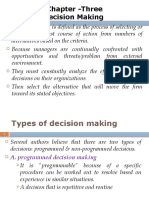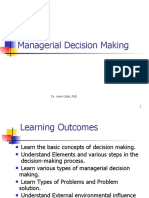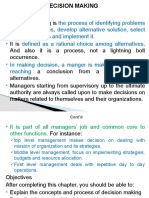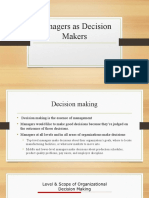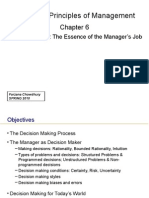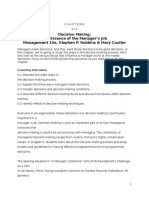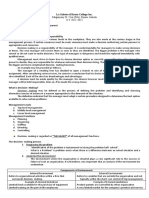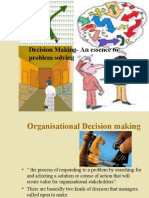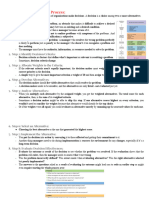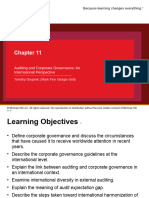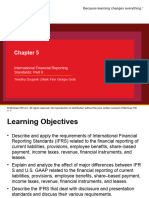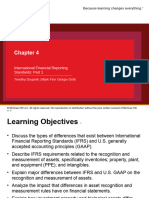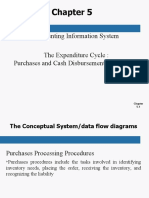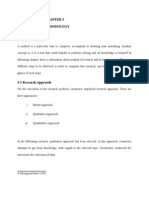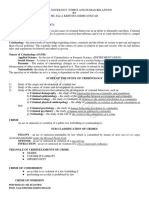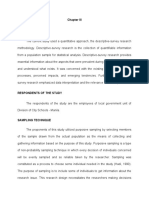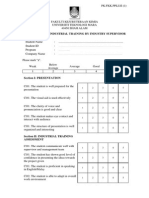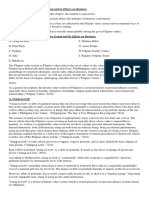0% found this document useful (0 votes)
77 views20 pagesChapter 7 p1
This document outlines the eight steps in the managerial decision-making process: 1) identifying the problem, 2) identifying decision criteria, 3) allocating weights to criteria, 4) developing alternatives, 5) analyzing alternatives, 6) selecting an alternative, 7) implementing the alternative, and 8) evaluating the decision's effectiveness. The process is described as relevant for both personal and corporate decisions. Managers must carefully identify problems and potential solutions before systematically analyzing alternatives and criteria to arrive at the optimal decision.
Uploaded by
hasan jabrCopyright
© © All Rights Reserved
We take content rights seriously. If you suspect this is your content, claim it here.
Available Formats
Download as PPTX, PDF, TXT or read online on Scribd
0% found this document useful (0 votes)
77 views20 pagesChapter 7 p1
This document outlines the eight steps in the managerial decision-making process: 1) identifying the problem, 2) identifying decision criteria, 3) allocating weights to criteria, 4) developing alternatives, 5) analyzing alternatives, 6) selecting an alternative, 7) implementing the alternative, and 8) evaluating the decision's effectiveness. The process is described as relevant for both personal and corporate decisions. Managers must carefully identify problems and potential solutions before systematically analyzing alternatives and criteria to arrive at the optimal decision.
Uploaded by
hasan jabrCopyright
© © All Rights Reserved
We take content rights seriously. If you suspect this is your content, claim it here.
Available Formats
Download as PPTX, PDF, TXT or read online on Scribd
/ 20









